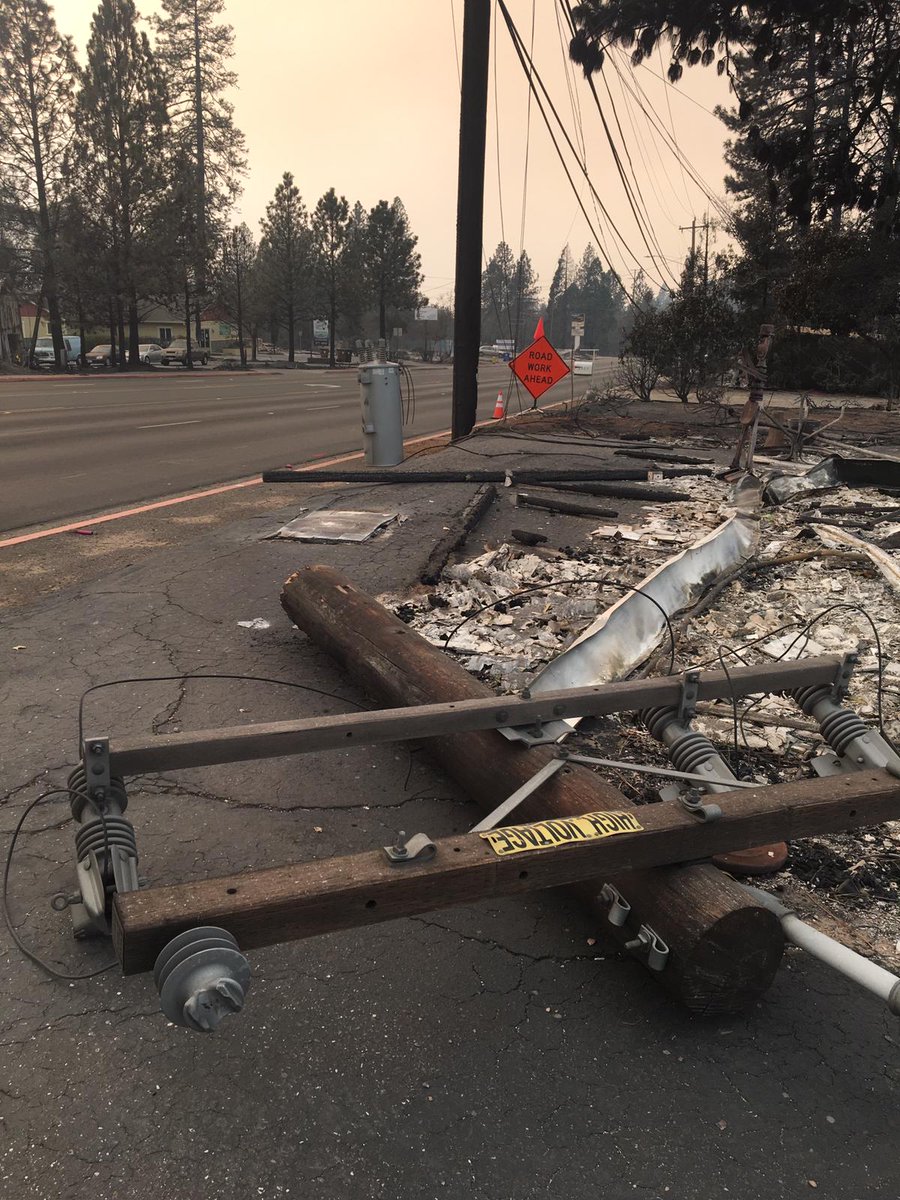
CHICO, Calif. — With 63 people confirmed dead in the Northern California wildfire, authorities Friday tried to winnow down a slapped-together list of the missing more than 600 names long, hoping many of them got out safely in the chaos over a week ago.
President Donald Trump, meanwhile, will travel to the disaster zone Saturday to get a look at the grief and damage from the deadliest U.S. wildfire in a century and could encounter locals resentful over his suggestion California is to blame for its misfortune.
Butte County spokeswoman Miranda Bowersox said the “unaccounted for” list released by the sheriff’s office late Thursday was an effort to put names out there so people can call in to say they are OK.
The roster probably includes some who fled the blaze and do not realize they’ve been reported missing, Sheriff Kory Honea said.
Some on the list have been confirmed as dead by family and friends on social media. Others have been located and are safe, but authorities haven’t gotten around to marking them as found.
Tamara Conry said she should never have been the list.
“My husband and I are not missing and never were!” Conry wrote Thursday night on Facebook. “We have no family looking for us. … I called and left a message to take our names off.”
Authorities compiled the list by going back to listen to all the dispatch calls they received since the fire started, to make sure they didn’t miss anyone.
In last year’s catastrophic wildfires in California wine country, Sonoma County authorities at one point listed more than 2,000 people as missing. But they slowly whittled down the number. In the end, 44 people died in several counties.
The wildfire this time practically burned the town of Paradise to the ground and heavily damaged the outlying communities of Magalia and Concow on Nov. 8, destroying 9,700 houses and 144 apartment buildings, authorities said.
Firefighters continued to gain ground against the blaze, which blackened 222 square miles (575 square kilometres) but was 45 per cent contained and posed no imminent threat to populated areas. Crews managed stop it from spreading toward Oroville, population 19,000.
This patch of California, a former Gold Rush region in the Sierra Nevada foothills, is to some extent Trump country, with Trump beating Hillary Clinton in Butte County by 4 percentage points in 2016.
But some survivors resent that Trump took to Twitter two days after the disaster to blame the wildfires on forest mismanagement and threaten to withhold federal payments from California.
“If you insult people, then you go visit them, how do you think you’re going to be accepted? You’re not going to have a parade,” said Maggie Crowder of Magalia as she stood in a line outside a mall in Chico where government agencies set up an assistance centre.
But Joe Estes, a 26-year-old salesman from Magalia who voted for Trump, said he feels good about the president’s visit and hopes it will focus attention on the need to rebuild.
“I think he should come, and hopefully help people and not put everybody down,” he said.
More than 450 searchers continued looking for human remains in the ashes. Some 27,000 people, many of them retirees, lived in Paradise.
Around 52,000 people have been driven out and have gone to shelters, motels, the homes of friends and relatives, and a Walmart parking lot and an adjacent field in Chico, a dozen miles from Paradise.
With winter coming on, survivors are seeking answers on what assistance will be provided.
At the Walmart encampment, Richard Wilson, 68, sought information from the Federal Emergency management Agency about lodging. His wife is nearly bedridden from lupus and fibromyalgia.
“We’re having to stay at a Marriott, which is like $100 a night, and we’re running out of money,” Wilson said as he stood outside in rubber sandals and no socks — the only footwear he had when he fled the flames that destroyed his home.
Stacy Lazzarino, who voted for Trump, said she thinks it would be good for the president to see the devastation up close.
“I think by maybe seeing it he’s going to be like ‘Oh my goodness,’ and it might start opening people’s eyes,” she said.
In fire-stricken Southern California, meanwhile, more residents were being allowed back in their homes near Los Angeles after a blaze torched an area the size of Denver and destroyed more than 600 homes and other structures. The blaze was 69 per cent contained, authorities said.
At least three deaths were reported.
Schools across a large swath of the state were closed because of smoke, and San Francisco’s world-famous open-air cable cars were pulled off the streets.
———
Associated Press reporters Janie Har and Olga Rodriguez in San Francisco contributed to this report.